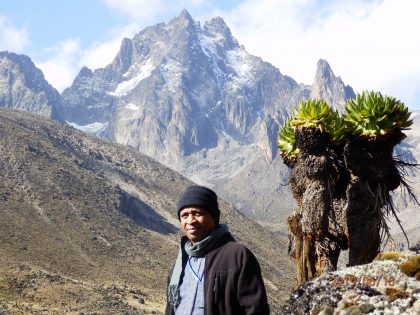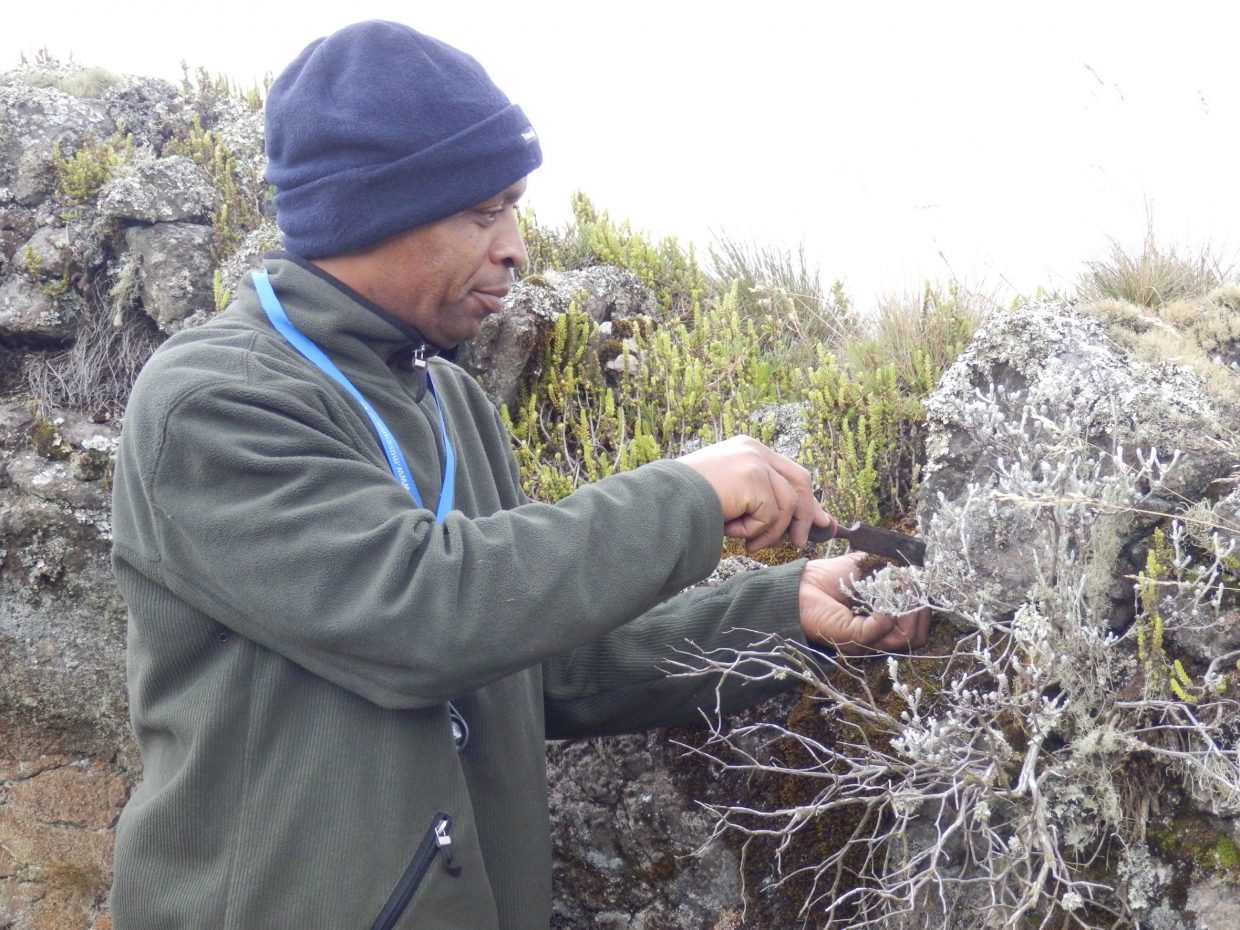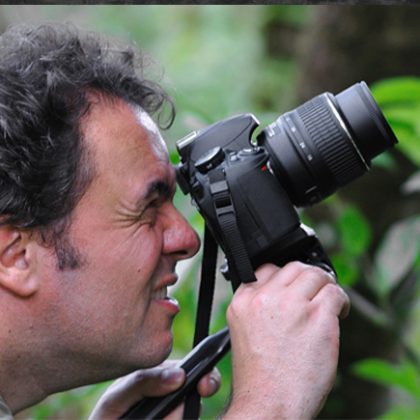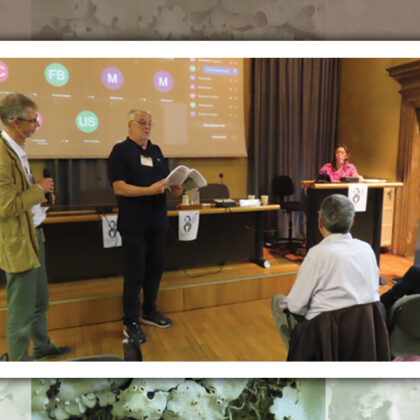Q&A with Guest Editor Paul Kirika on African Lichenology

How did you first get into lichenology?
I got into lichenology through a colleague, Dr George Mugambi, then working at the National Museums of Kenya, who was at the time undertaking research for his PhD at the Field Museum in Chicago. He introduced me to Professor Thorsten Lumbsch who together with Professors Ana Crespo and Pradeep Divakar had earlier organized a lichenology training workshop in Nairobi. I was later invited to attend a lichen workshop at the Field Museum, where I met other lichenologists and was convinced it is a cool area of study. I would go on to undertake lichen research projects for both my MSc. and Ph.D. studies and have since then continued with collecting and studying lichens in Kenya.

What are the barriers and opportunities of working on lichens in Africa?
Africa with its diverse habitats harbours a rich lichen diversity, however studies on African lichens are rare. This may be attributed to the lack of local experts who would encourage and mentor upcoming researchers to take up lichenology, also an absence of baseline studies for most regions and a dearth of identification keys and manuals, accompanied by the difficulties in getting research funding to study lichens. However, there is a huge potential for vibrant lichenological studies in Africa, which can be achieved through collaborative research with experts from other regions. This is however urgent, due to the accelerated loss and degradation of the natural habits that harbour lichens, leading to a loss of species before they are even documented.
What do you think are the most important questions in lichenology at the moment?
Some of the questions are; what is the true lichen diversity of Africa? What is the distribution of the various groups and why? What is the evolutionary relationships of the African taxa with those of other regions? Which are the endemic species in Africa and why? How can lichens be used in modelling to improve climate change scenarios?

What’s the best thing about being a lichenologist?
Lichenology is a specialized discipline and a unique field of study. I also like the fact that lichens are the symbiotic associations that are highly successful.
Do you have a favourite lichen, and why?
Not really, I love most of them! However, I like Usneas especially the pendant ones that hang on trees in montane areas, generating sometime enormous biomass. I also like the bright orange and yellow coloured Caloplacas growing on rocky outcrops.
Read the papers in the The Lichenologist special issue on African Lichenology here.






